![]()
Psittacofulvins
They make parrots colourful!
![]()
![]()
Molecule of the Month October 2025
Also available: JSMol version.
![]()
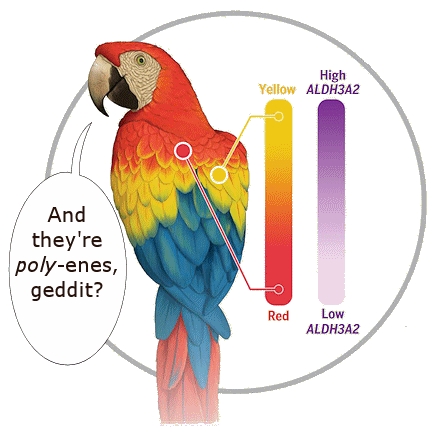
PsittacofulvinsThey make parrots colourful!
Molecule of the Month October 2025
|
 |
It comes from the ancient Greek for parrot, psittacus (ψιττακός), which gave its name to the 4 families of birds we call parrots – Psittaciformes.
Quite right. Parrots are well known for being very brightly coloured birds, with their feathers having almost every colour from red to blue depending on the species. Unlike most colours in nature, which are derived from carotenoid molecules (see MOTMs for April 2002, Jan 2017, Jan 2020, and June 2021), parrots are somewhat of an evolutionary novelty in that they evolved their own pigments called psittacofulvins.
There are actually 5, which vary in carbon-chain length, with the structure shown in the picture.
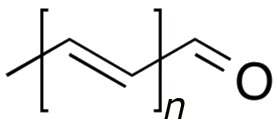
Psittacofulvin molecules consist of linear polyenes terminated by an aldehyde group.
There are five known psittacofulvins – tetradecahexenal (n=6), hexadecaheptenal (n=7),
octadecaoctenal (n=8) and eicosanonenal (n=9).
The fifth is found in the feathers of scarlet macaws but its structure is currently unknown.
These pigments are responsible for the bright-red, orange, and yellow colours seen in parrots. What about the blues and greens?That’s a slightly different story, as blue colours occur due to nanostructures on the surface of the feather interacting with and reflecting light of similar wavelengths, in the same way that certain beetles can appear blue or metallic. And if you combine blue light from the nanostructures, with yellow from the pigments, you get green. |
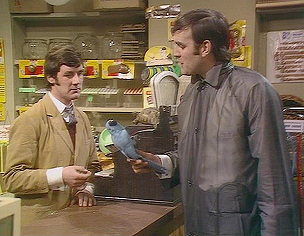
Except from Monty Python’s ‘Dead Parrot Sketch’: |
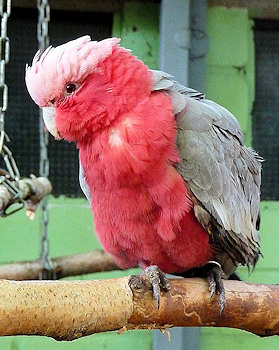 |
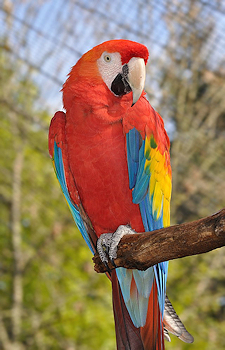 |
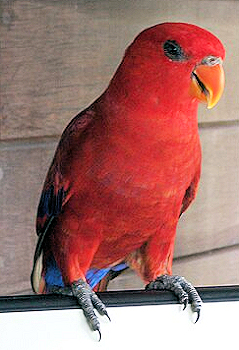 |
| Rose cockatoo or Galah (Eolophus roseicapilla) Image: 4028mdk09, CC BY-SA 3.0 via Wikimedia Commons] |
Scarlett macaw (Ara macao) [Image: Quartl, CC BY-SA 3.0 via Wikimedia Commons] |
Red lory (Eos bornea) [Image: René Modery, CC BY 2.0 via Wikimedia Commons |
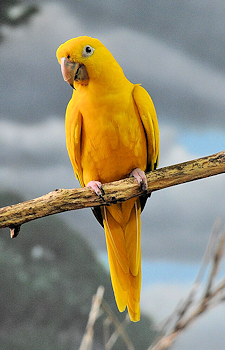 |
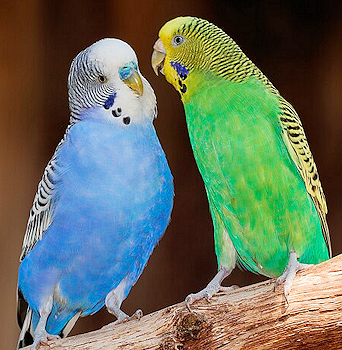 |
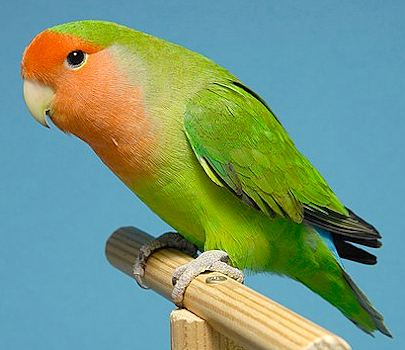 |
| Golden parakeet (Guaruba guarouba) [Image: Ted, CC BY-SA 2.0 via Wikimedia Commons] |
Budgerigar (Melopsittacus undulatus) [Image: H. Zell, CC BY-SA 3.0 via Wikimedia Commons] |
Rosy-faced lovebird (Agapornis roseicollis) [Image: Johann Alexi, CC BY-SA 4.0 via Wikimedia Commons] |
Until recently it was not known how the colouration in parrots from red to yellow was controlled by these pigments. But a recent study published in the journal Science by Roberto Arbore and coworkers showed that it was all down to the functional groups at the end of the molecules.


An example of a psittacofulvin in its red aldehyde form (top, hexadecaheptaenal), and its yellow carboxylic acid form (bottom, hexadecaheptaenoic acid).
The colour is tuned from yellow to red depending upon the ratio of carboxylic acid to aldehyde end groups in the molecules. Feathers which have large amounts of aldehyde psittacofulvins appear red, whereas feathers that instead contain higher levels of carboxyl psittacofulvins appear yellow and green.
It turns out that single enzyme called aldehyde dehydrogenase (ALDH3A2) controls the whole balance between the red and yellow pigment. This enzyme oxidizes the aldehyde form into the carboxylic acid form in the skin cells from which the feather grow. Due to their slightly different metabolisms, different species of parrot biosynthesise different amounts of ALDH3A2, and as a result grow different coloured feathers.
Where is the pigment found?In the shafts and barbules of the feathers. Why is all this important?Well, it's important for the parrots because colouration is used for communication among birds. They use their vibrant diverse plumage for many purposes, including camouflage, social signalling and attracting a mate. But more generally, these findings demonstrate nicely that a huge amount of the complexity and diversity that we see all around us, in this case in the variety and colours of parrots, can arise from very simple mechanisms – slight variations in the concentration of a single enzyme. And this is true throughout nature, and is a key concept in evolutionary theory. |
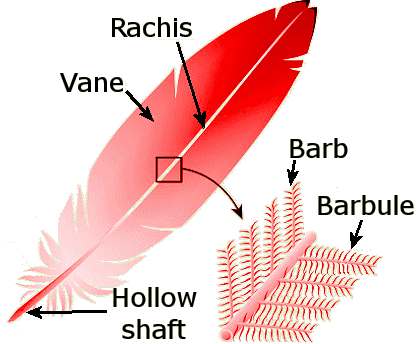 Anatomy of a feather. [Image: Birdtricks.com] |
![]()
Wikipedia:
![]()
![]() Back to Molecule of the Month page. [DOI:10.6084/m9.figshare.28375799]
Back to Molecule of the Month page. [DOI:10.6084/m9.figshare.28375799]